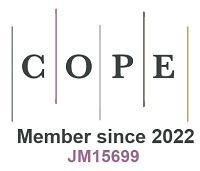Volume 4, Issue 4 (December, 2024) – 20 articles
Cover Picture: A new method was developed for post-modification of porous aromatic framework-1 (PAF-1) with chloride and then amine groups confirmed by different characterizations such as nuclear magnetic resonance (NMR), X-ray photoelectron spectroscopy (XPS), and Fourier transform infrared spectroscopy (FTIR). Compared to PAF-1, the amine-functionalized PAF-1 (PAF-1-NH2) exhibits a 50% improvement in carbon dioxide (CO2) adsorption capacity reaching 42 cm3·g-1 at room temperature and 1 bar, and the uptakes under CO2 concentration in air (4 kPa) and flue gas (150 kPa) also greatly increase. The column breakthrough experiments showed that PAF-1-NH2 can separate CO2 from a simulated flue gas of CO2/N2 (15:85, v/v) indicating its potential applications in post-combustion systems.
view this paper Back Cover Picture: Chiral indene skeletons are widely found in biologically active natural products and pharmaceutical molecules, making indene synthesis an ongoing research hotspot in organic synthetic chemistry. However, the construction of chiral spiro-indenes bearing all-carbon quaternary stereocenters via catalytic asymmetric synthesis remains challenging due to their inherent rigidity and hindrance. Herein, we present a solution to this unmet challenge through palladium-catalyzed asymmetric (4 + 2) dipolar cyclization by trapping π-allyl-Pd 1,4-dipoles with indene-involved ketenes generated in situ from 1-diazonaphthalene-2(1H)-ones via visible light-induced Wolff rearrangement. This protocol features mild reaction conditions, wide substrate scope, and high enantio- and diastereoselectivities [31 examples, up to 86% yield, 97% enantiomer excess (ee) and 19:1 diastereoisomer ratio (dr)].
view this paper









